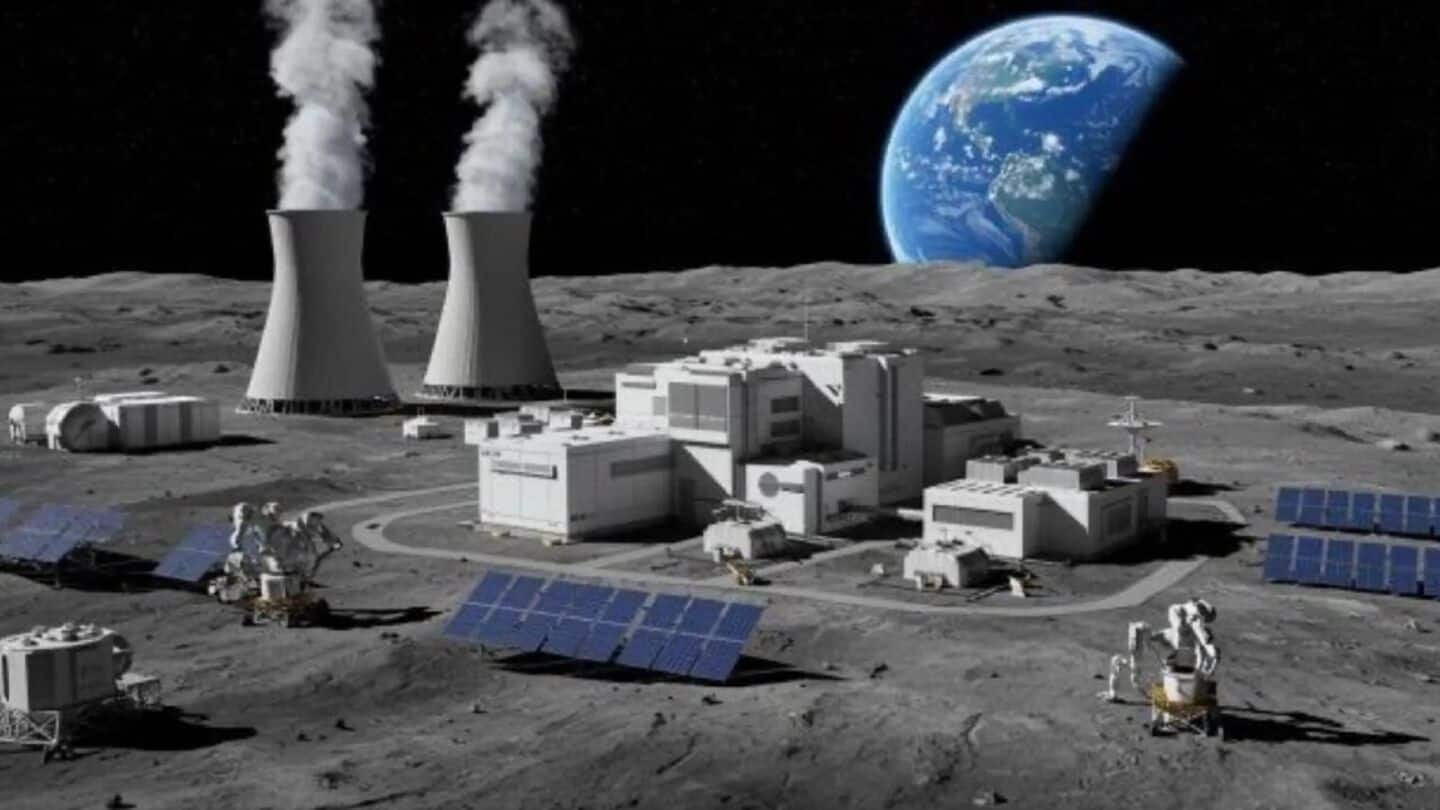
Why NASA wants to put a nuclear reactor on Moon
What's the story
NASA has unveiled plans to build a nuclear reactor on the Moon by 2030. The announcement was made by interim administrator Sean Duffy, who said the US is in a new space race with China. The strategic location for this lunar base would be near the south pole, where water ice and sunlight are abundant. These resources are crucial for sustaining human life and generating power on the Moon.
Energy needs
Lunar nights and energy needs
Duffy emphasized that energy is key to establishing a permanent base on the Moon. He wants a 100 kilowatt (kW) nuclear reactor installed by 2030, which would produce as much electricity as an average American household consumes in 3.5 days. This is especially important considering the two-week-long lunar nights when solar power isn't enough for sustained human presence or operations on the Moon.
Space competition
Space race heating up
The US is racing to place nuclear power reactors on the Moon and Mars, hoping to launch the first by decade's end. Meanwhile, China is also planning a lunar base with Russia and other countries. A successful manned landing before 2030 could fast-track China's plans for a "basic model" of the International Lunar Research Station by 2035. This base would include a nuclear reactor as its power source.
Space law
Is it legal?
Michelle LD Hanlon, a space law expert from the University of Mississippi, said deploying a nuclear reactor on the Moon isn't illegal or unprecedented. She stressed that nothing in international law prohibits the peaceful use of nuclear power on the Moon. Hanlon also noted that if deployed responsibly, it could enable countries to explore the Moon peacefully and fuel their economic growth for deeper space missions.
Future plans
NASA's push for nuclear power
Since 2000, NASA has spent $200 million developing small, lightweight fission power systems, though none have progressed towards flight readiness. The latest effort was in 2023 with three $5 million industry study contracts to generate 40kW of power. This is enough to run 30 households continuously for a decade. In December 2024, NASA formally committed to using nuclear power on Mars—the first of seven key decisions needed for human exploration of the Red Planet.